| [1] Lim H,Han DH,Lee IJ,et al.A Simple Strategy in Avulsion Flap Injury: Prediction of Flap Viability Using Wood's Lamp Illumination and Resurfacing with a Full-thickness Skin Graft. Arch Plast Surg. 2014; 41(2):126-132.[2] 张祥运,廖毅.重组水蛭素对大鼠撕脱皮瓣存活的影响[J].中华医学美学美容杂志,2014, 20(2):126-129.[3] 王太平.局部应用重组水蛭素对兔耳静脉淤血皮瓣成活的影响[D]. 泸州:泸州医学院,2008.[4] 郎继荣 .高压氧联合依达拉奉和奥扎格雷治疗进展性脑梗死的疗效观察[J]. 中国现代医生,2014,52(34):151-153.[5] 刘滨,杨涛,王林,等.依达拉奉治疗急性重型颅脑损伤的疗效探讨[J].临床军医杂志,2013, 41(10):1020-1021.[6] 任剑锋,孔宪忠.依达拉奉的实验研究及临床应用进展[J].中国民族民间医药,2012, 21(4):33-34.[7] 王海鹏,袁丹,李冬华,等.依达拉奉治疗缺血性卒中后认知功能障碍的随机对照研究[J].川北医学院学报,2015,30(5):649-651.[8] 凡奇,钱腊燕,杨淼,等.依达拉奉联合高压氧治疗急性脑梗死的疗效观察[J].实用心脑肺血管病杂志,2014,22(3):11-12.[9] Yan D,Shan J,Ze Y,et al.The effects of combined hyperbaric oxygen therapy on patients withpost-stroke depression. J Phys Ther Sci. 2015;27(5):1295-1297.[10] 罗世官,陈宏明,谭荣邦,等.高压氧预适应联合依达拉奉对心脏瓣膜置换术后患者神经认知功能、生活质量及炎症因子水平的影响[J].中国医药导报,2016,13(8):29-32.[11] Kujawski S, Kujawska A, Kozakiewicz M,et al.The effect of hyperbaric oxygen therapy on the nervous system. Systematic review.Polish Hyperbaric Res.2015;53(4).[12] Peng HS,Liao MB,Zhang MY,et al.Synergistic inhibitory effect of hyperbaric oxygen combined with sorafenib on hepatoma cells.Plos One.2014;9(6):e100814.[13] 陈劲松,张波,潘从泽,等.MCP-3对人脐静脉内皮细胞表达ICAM-1、VCAM-1、TF/TFPI及其凋亡的影响[J].南方医科大学学报,2013,33(1):86-92.[14] Yang T,Chen ZY,Ren JZ,et al.Effect of hyperbaric oxygen on the scar formation at the rabbit ear. Zhonghua Zheng Xing Wai Ke Za Zhi. 2013;29(1):55-58.[15] Zhiyong W,Fei S,Lianju X,et al.Endostar injection inhibits rabbit ear hypertrophic scar formation. Int J Low Extrem Wounds. 2012;11(4): 271-276.[16] Hu X,Wang H,Liu J,et al.The role of ERK and JNK signaling in connective tissue growth factor induced extracellular matrix protein production and scar formation. Arch Dermatol Res. 2013;305(5): 433-445.[17] LI HC,Yan L,Wang DL,et al.Imiquimod Inhibit Scar Formation by Regulating the Expression of Th1/Th2 Cell Related Chemokines in Rabbit Ear Hypertrophic Scar Model.Progress in Modern Biomedicine.2014.[18] Jia S,Xie P,Hong SJ,et al.Intravenous curcumin efficacy on healing and scar formation in rabbit ear wounds under nonischemic, ischemic, and ischemia-reperfusion conditions. Wound Repair Regen. 2014; 22(6):730-739.[19] Fang Q,Huang C,You C,et al.Opuntia Extract Reduces Scar Formation in Rabbit Ear Model: A Randomized Controlled Study. Int J Low Extrem Wounds. 2015;14(4):343-352. [20] 兰德彬,邹兴军,陈锐.高血压脑出血术后高压氧联合依达拉奉治疗对脑血管功能的影响[J].医学研究杂志,2016,45(1):166-169.[21] 封林森,马建华,印佳,等.早期高压氧联合依达拉奉对颅脑外伤患者血管活性因子的影响及疗效[J].中国血液流变学杂志, 2013,23(4):685-687.[22] 赵华,钟丽珍,王剑锋,等.依达拉奉联合高压氧治疗血管性痴呆的疗效观察及对患者血浆一氧化氮合成酶的影响[J].求医问药(学术版),2012,10(6): 82-83.[23] Hou XH, Pei F. Estradiol Inhibits Cytokine-Induced Expression of VCAM-1 and ICAM-1 in Cultured Human Endothelial Cells Via AMPK/PPARα Activation.Cell Biochem Biophys. 2015;72(3):709-717.[24] Ma YR, Ma YH. MIP-1α enhances Jurkat cell transendothelial migration by up-regulating endothelial adhesion molecules VCAM-1 and ICAM-1. 2014;38(11):1327-1331.[25] Chang CC,Chu CF,Wang CN,et al.The anti-atherosclerotic effect of tanshinone IIA is associated with the inhibition of VCAM-1-induced VCAM-1, ICAM-1 and CX3CL1 expression. Phytomedicine. 2014; 21(3):207-216.[26] Taleb S,Moghaddas P,Rahimi BM,et al.Metformin improves skin flap survival through nitric oxide system. J Surg Res. 2014;192(2):686-691.[27] Bagdas D,Cam EB,Inan OS,et al.Effects of systemic chlorogenic acid on random-pattern dorsal skin flap survival in diabetic rats. Biol Pharm Bull. 2014;37(3):361-370..[28] Xie XG,Zhang M,Dai YK,et al.Combination of vascular endothelial growth factor-loaded microspheres and hyperbaric oxygen on random skin flap survival in rats.Exp Ther Med. 2015;10(3):954-958.[29] Cai L,Huang W,Lin D.Effects of Traditional Chinese Medicine Shuxuetong Injection on Random Skin Flap Survival in Rats. ScientificWorldJournal. 2014;2014:816545.[30] 赵国印,刘瑞花.神经节苷脂与依达拉奉联合高压氧治疗一氧化碳中毒迟发脑病疗效分析[J].中国实用神经疾病杂志, 2014,17(18):28-29. |
.jpg) 文题释义:
皮肤撕脱伤:皮肤撕脱伤是由于车轮或机器传动带等产生的外力作用致皮肤和皮下组织从深筋膜深面或浅面强行剥脱,同时伴有不同程度的软组织碾挫损伤,受累皮肤常因缺血发生大面积坏死。
自由基清除剂:能将自由基还原为非自由基的氧化剂称为自由基清除剂。自由基清除剂是指具有延迟、抑制和阻断活性氧/氧自由基氧化损伤的物质的总称,是能够与氧自由基结合并使之清除的机体保护剂。因此,在机体正常过程中以及保护细胞和组织免受氧化损伤中具有重要作用。
文题释义:
皮肤撕脱伤:皮肤撕脱伤是由于车轮或机器传动带等产生的外力作用致皮肤和皮下组织从深筋膜深面或浅面强行剥脱,同时伴有不同程度的软组织碾挫损伤,受累皮肤常因缺血发生大面积坏死。
自由基清除剂:能将自由基还原为非自由基的氧化剂称为自由基清除剂。自由基清除剂是指具有延迟、抑制和阻断活性氧/氧自由基氧化损伤的物质的总称,是能够与氧自由基结合并使之清除的机体保护剂。因此,在机体正常过程中以及保护细胞和组织免受氧化损伤中具有重要作用。.jpg) 文题释义:
皮肤撕脱伤:皮肤撕脱伤是由于车轮或机器传动带等产生的外力作用致皮肤和皮下组织从深筋膜深面或浅面强行剥脱,同时伴有不同程度的软组织碾挫损伤,受累皮肤常因缺血发生大面积坏死。
自由基清除剂:能将自由基还原为非自由基的氧化剂称为自由基清除剂。自由基清除剂是指具有延迟、抑制和阻断活性氧/氧自由基氧化损伤的物质的总称,是能够与氧自由基结合并使之清除的机体保护剂。因此,在机体正常过程中以及保护细胞和组织免受氧化损伤中具有重要作用。
文题释义:
皮肤撕脱伤:皮肤撕脱伤是由于车轮或机器传动带等产生的外力作用致皮肤和皮下组织从深筋膜深面或浅面强行剥脱,同时伴有不同程度的软组织碾挫损伤,受累皮肤常因缺血发生大面积坏死。
自由基清除剂:能将自由基还原为非自由基的氧化剂称为自由基清除剂。自由基清除剂是指具有延迟、抑制和阻断活性氧/氧自由基氧化损伤的物质的总称,是能够与氧自由基结合并使之清除的机体保护剂。因此,在机体正常过程中以及保护细胞和组织免受氧化损伤中具有重要作用。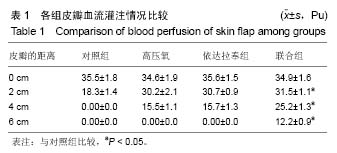
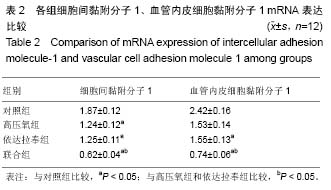
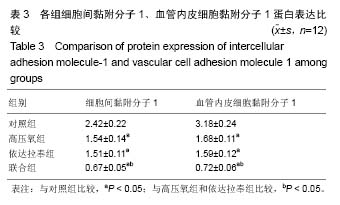
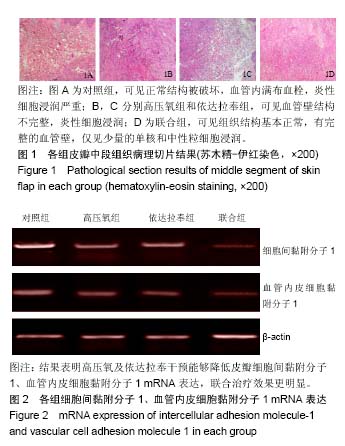
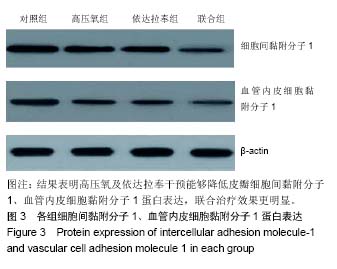
.jpg) 文题释义:
皮肤撕脱伤:皮肤撕脱伤是由于车轮或机器传动带等产生的外力作用致皮肤和皮下组织从深筋膜深面或浅面强行剥脱,同时伴有不同程度的软组织碾挫损伤,受累皮肤常因缺血发生大面积坏死。
自由基清除剂:能将自由基还原为非自由基的氧化剂称为自由基清除剂。自由基清除剂是指具有延迟、抑制和阻断活性氧/氧自由基氧化损伤的物质的总称,是能够与氧自由基结合并使之清除的机体保护剂。因此,在机体正常过程中以及保护细胞和组织免受氧化损伤中具有重要作用。
文题释义:
皮肤撕脱伤:皮肤撕脱伤是由于车轮或机器传动带等产生的外力作用致皮肤和皮下组织从深筋膜深面或浅面强行剥脱,同时伴有不同程度的软组织碾挫损伤,受累皮肤常因缺血发生大面积坏死。
自由基清除剂:能将自由基还原为非自由基的氧化剂称为自由基清除剂。自由基清除剂是指具有延迟、抑制和阻断活性氧/氧自由基氧化损伤的物质的总称,是能够与氧自由基结合并使之清除的机体保护剂。因此,在机体正常过程中以及保护细胞和组织免受氧化损伤中具有重要作用。